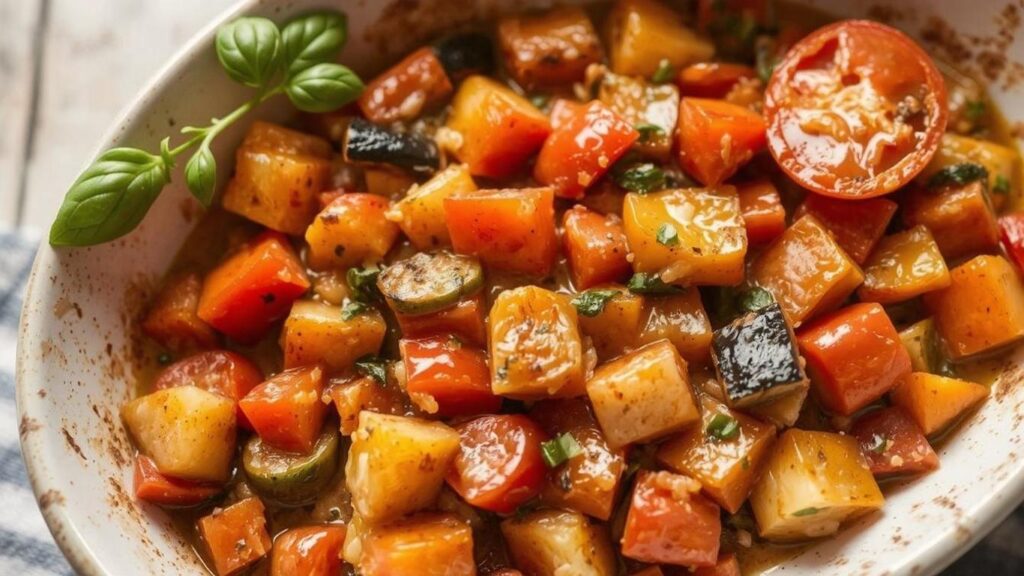Easy Korean Bibimbap Recipe for Busy Weeknights
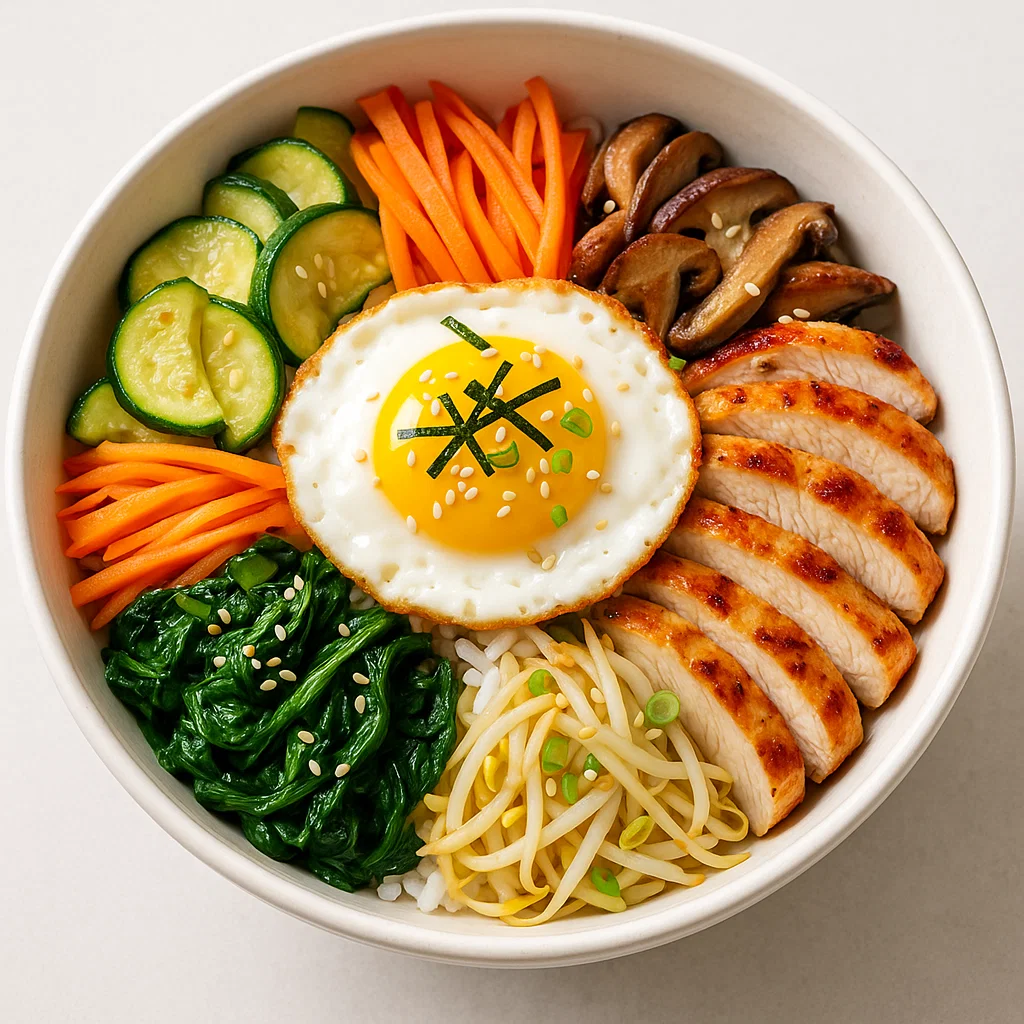
When it comes to quick, satisfying, and flavorful meals, bibimbap is a standout. This beloved Korean dish, which translates to “mixed rice,” is a delightful combination of rice, vegetables, meat (optional), and a flavorful gochujang (Korean chili paste) sauce. It’s easy to make, customizable, and perfect for busy weeknights when you want something tasty and nutritious in no time.
In this post, we’ll guide you through an easy Korean bibimbap recipe that can be whipped up in less than 30 minutes, making it ideal for hectic evenings when you need a meal that both satisfies and fuels your body. With fresh vegetables, a fried egg, and a spicy-sweet sauce, bibimbap is sure to become your new weeknight favorite.
What is Bibimbap?
Bibimbap is a traditional Korean dish that’s known for its vibrant colors, textures, and flavors. The base is typically steamed white rice, topped with an assortment of sautéed or raw vegetables, meat (often beef or chicken), a fried egg, and a spicy sauce made with gochujang. The beauty of bibimbap lies in its versatility—you can use whatever vegetables and proteins you have on hand, making it an adaptable and quick meal.
The dish is usually served in a hot stone bowl, which gives it a crispy rice crust, but it can easily be prepared in a regular bowl for a simpler version.
Ingredients for Easy Korean Bibimbap
Here’s a basic list of ingredients to make an easy bibimbap at home. Feel free to adjust based on what you have available!
For the Rice:

-
2 cups cooked white rice (jasmine or short-grain rice works best)
For the Toppings:
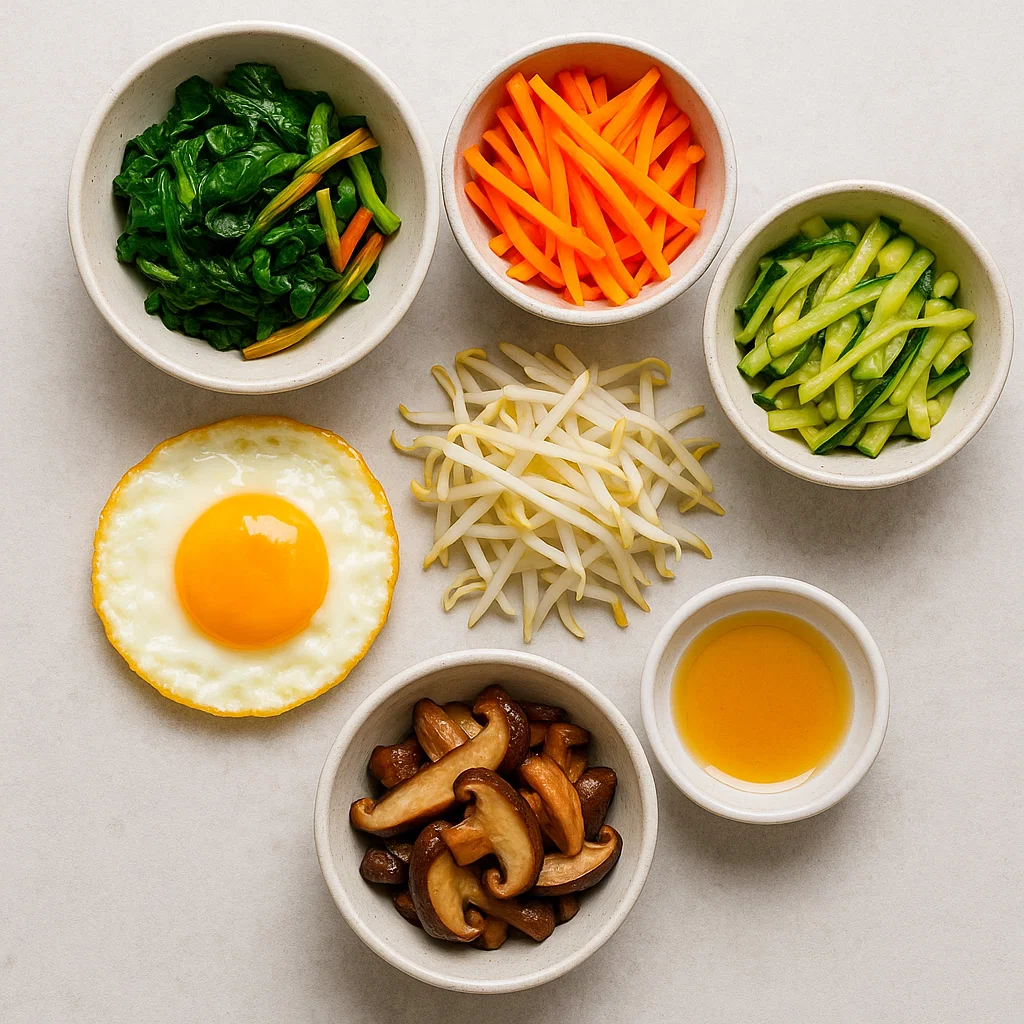
-
1/2 cup spinach or kale, sautéed
-
1/2 cup carrots, julienned and lightly sautéed or raw
-
1/2 cup zucchini, julienned and sautéed
-
1/2 cup bean sprouts, blanched
-
1/2 cup shiitake mushrooms or regular mushrooms, sautéed
-
1 egg (fried or scrambled)
-
1 tablespoon sesame oil
For the Sauce:
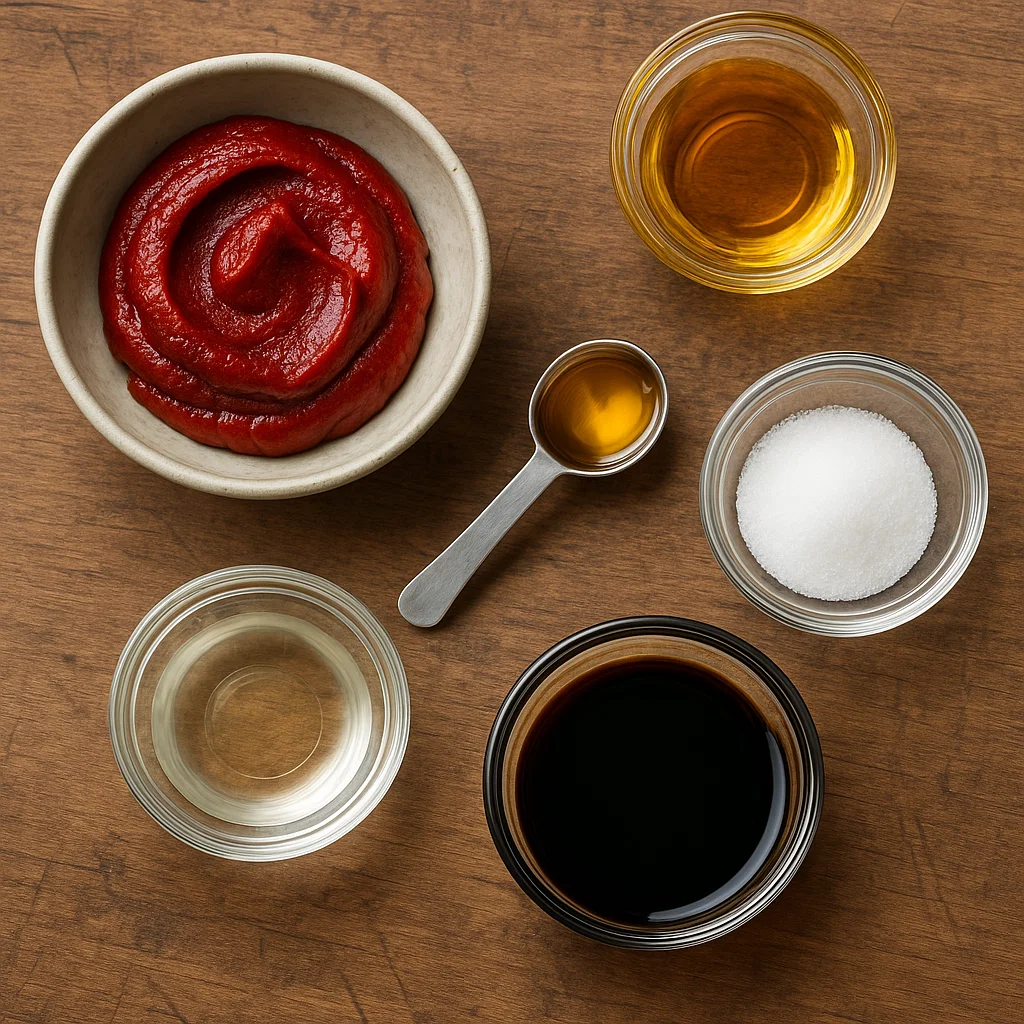
-
2 tablespoons gochujang (Korean chili paste)
-
1 tablespoon sesame oil
-
1 teaspoon sugar
-
1 tablespoon rice vinegar (optional)
-
1 teaspoon soy sauce
Optional Protein:
- 1/2 cup cooked ground beef, bulgogi (Korean marinated beef), or grilled chicken
Garnish:
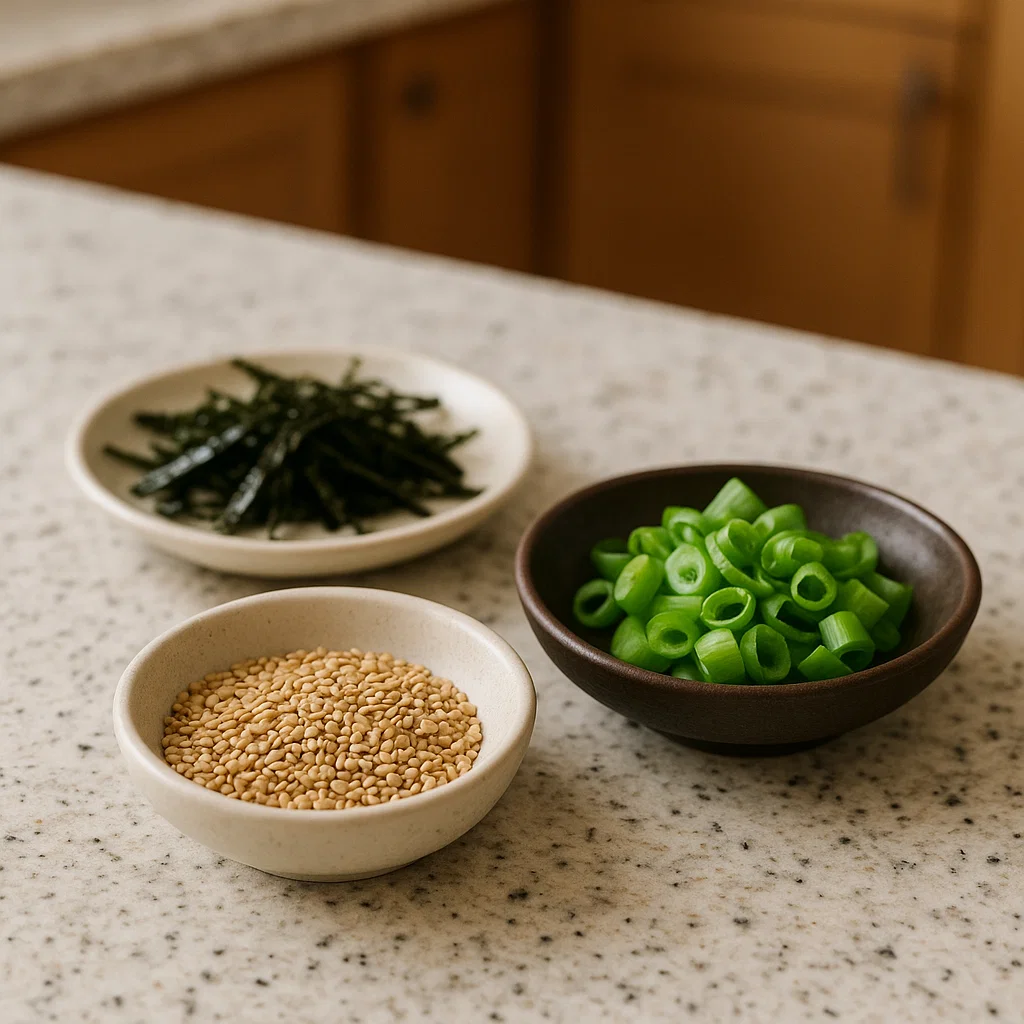
- 1 tablespoon toasted sesame seeds
- 1-2 teaspoons sliced green onions
- Seaweed (gim) strips for garnish (optional)
How to Make Easy Korean Bibimbap
Step 1: Prepare the Rice
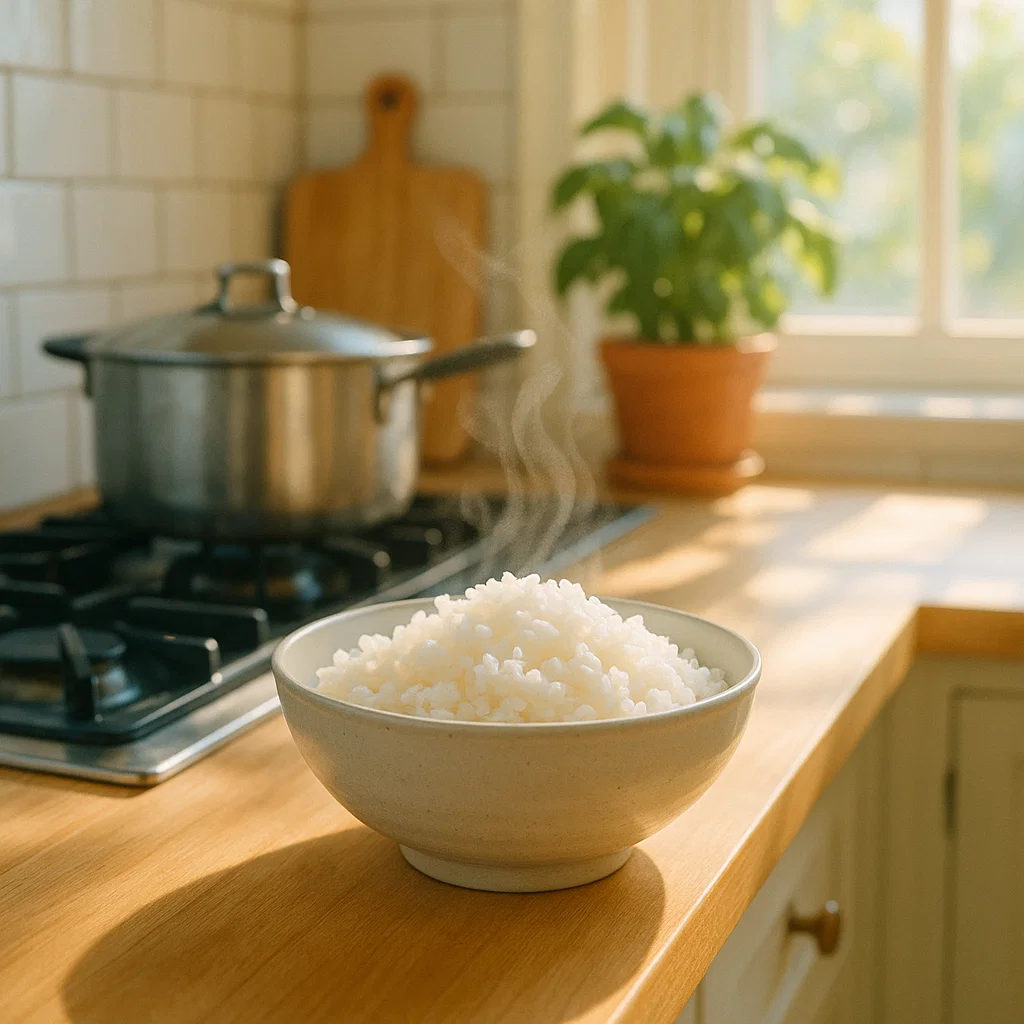
Start by cooking the rice. You can use a rice cooker, stovetop, or microwave, depending on what’s easiest for you. For bibimbap, it’s best to use short-grain rice or jasmine rice, as they are stickier and hold the toppings better. Once the rice is cooked, fluff it with a fork and set it aside.
Step 2: Prepare the Toppings
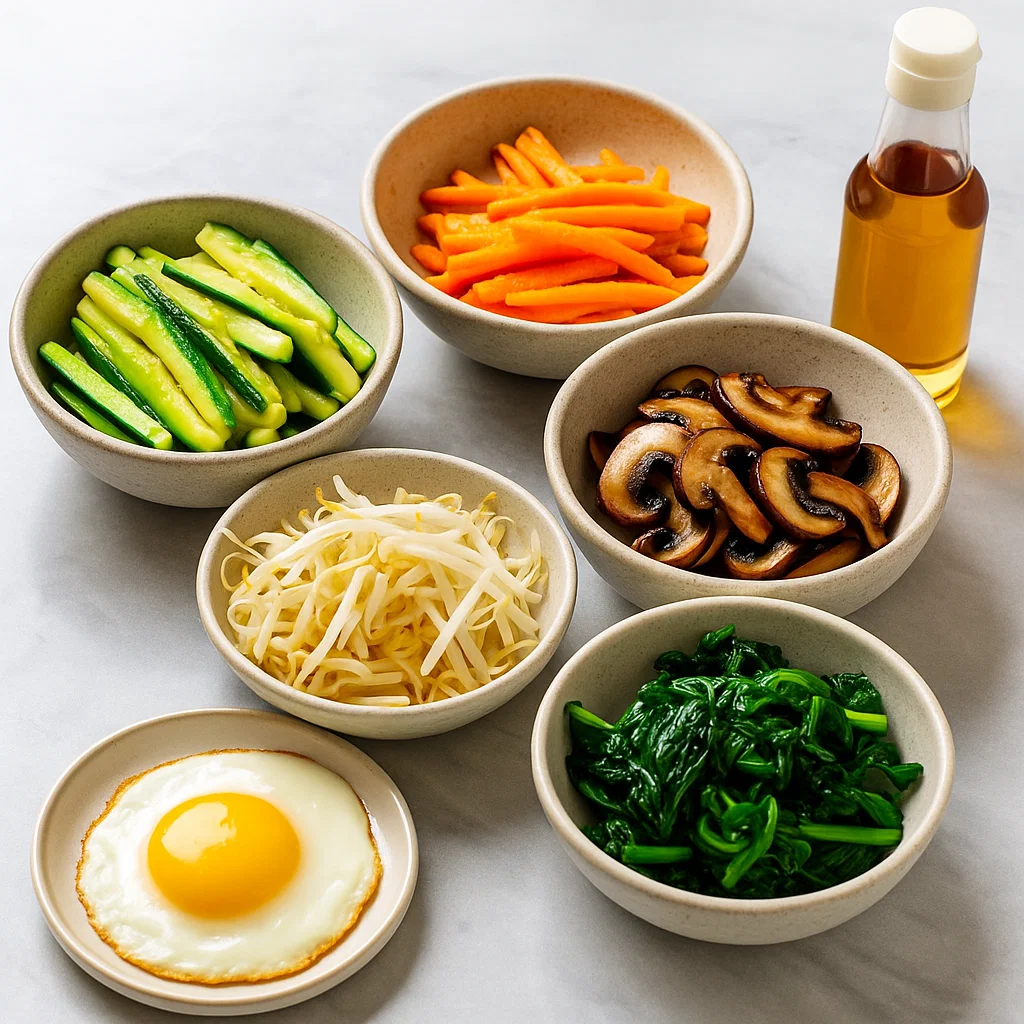
While the rice is cooking, prepare your toppings.
-
Sauté the vegetables: Heat a little sesame oil in a skillet over medium heat. Sauté the zucchini, carrots, and mushrooms separately until tender. Set them aside.
-
Blanch the spinach or kale: In a pot of boiling water, blanch the spinach or kale for 1-2 minutes until wilted. Drain and squeeze out the excess water. Season with a little sesame oil and salt.
-
Blanch the bean sprouts: Briefly blanch the bean sprouts in hot water for 1-2 minutes, then drain them.
-
Fry the egg: In the same skillet, fry one egg sunny-side up or scramble it, depending on your preference.
Step 3: Prepare the Sauce
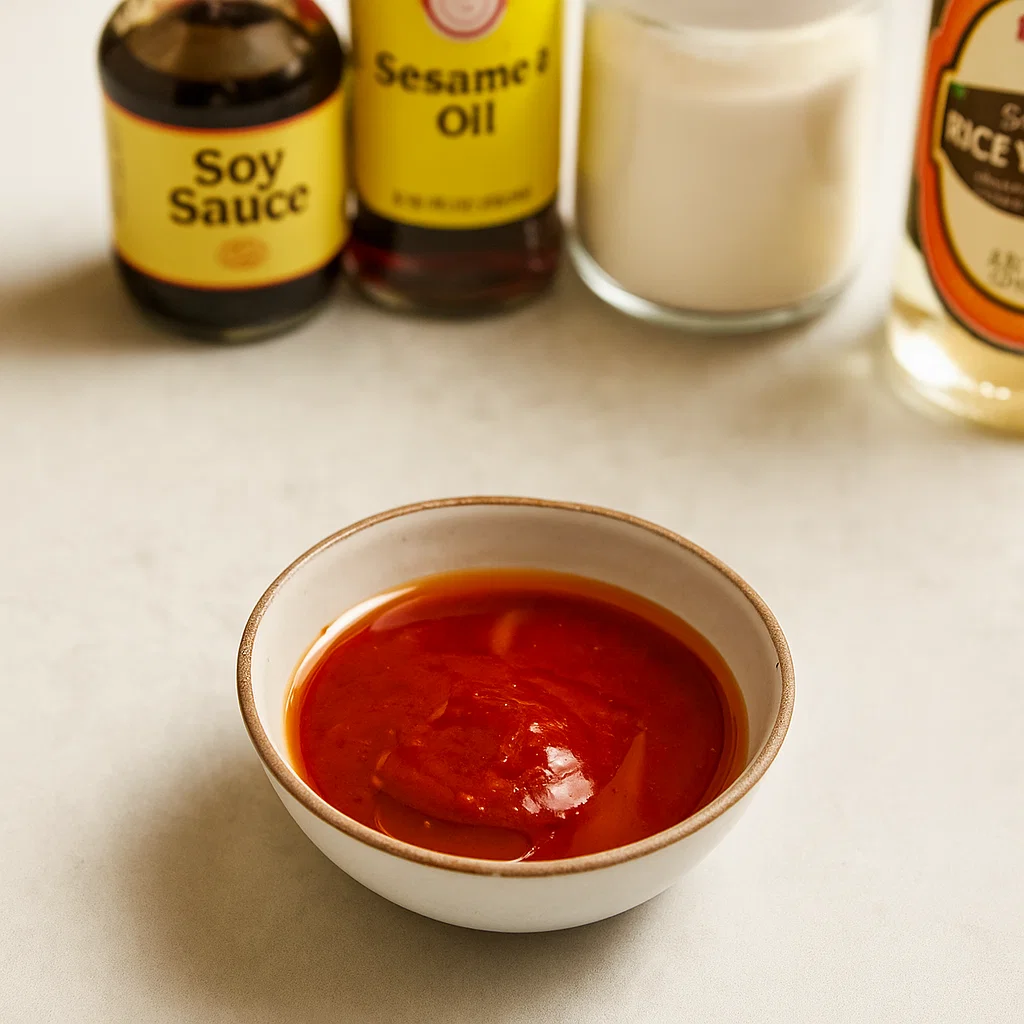
In a small bowl, whisk together the gochujang, sesame oil, sugar, soy sauce, and rice vinegar (if using). This sauce will add that signature spicy-sweet kick to your bibimbap.
Step 4: Assemble the Bibimbap

To assemble your bibimbap, place a generous portion of the cooked rice in the center of a large bowl. Arrange your toppings on top of the rice, creating sections for each vegetable and the fried egg. If you’re using a protein like ground beef or grilled chicken, add it to the bowl as well.
Drizzle a little bit of the gochujang sauce over the top, or serve it on the side if you prefer to control the spice level. Garnish with toasted sesame seeds, sliced green onions, and optional seaweed strips.
Step 5: Mix and Enjoy
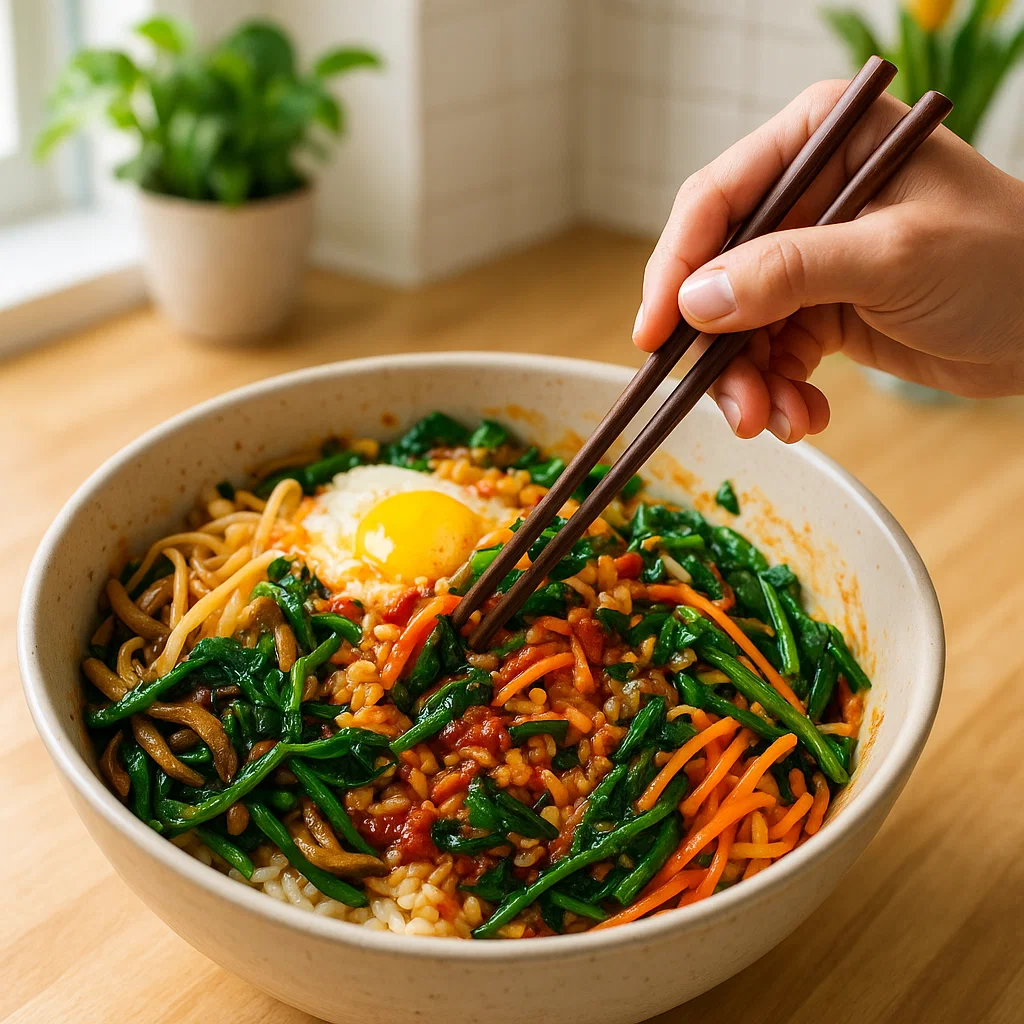
The final step in making bibimbap is to mix everything together! Use a spoon or chopsticks to thoroughly mix the rice, vegetables, egg, and sauce. The beauty of bibimbap is that it’s a “mixing bowl” dish—everything blends together for a harmonious combination of flavors and textures.
Tips for a Perfect Bibimbap
-
Customize your veggies: While the classic bibimbap often includes spinach, carrots, and zucchini, feel free to use any vegetables you have on hand. Bell peppers, cucumbers, or even radishes make great additions.
-
Make it vegetarian: Skip the meat and add extra protein with tofu or tempeh. You can also add more veggies or beans to bulk up the dish.
-
Control the spice: Adjust the amount of gochujang to fit your spice preference. If you prefer a milder version, reduce the gochujang or omit it entirely.
-
Serve with crispy rice: If you want to achieve the traditional crispy rice crust, heat a little sesame oil in a skillet, add the rice, and press it down. Cook for a few minutes until the rice at the bottom becomes crispy.
Why You’ll Love This Easy Korean Bibimbap Recipe
Bibimbap is the perfect dish for busy weeknights because it’s quick, customizable, and full of fresh, healthy ingredients. You can use whatever vegetables and proteins you have available, making it a great option for cleaning out the fridge. Plus, it’s packed with nutrients from the vegetables and full of flavor from the gochujang sauce, making it a satisfying meal that’s both delicious and nourishing.
With its easy preparation and versatile ingredients, Korean bibimbap is a dish that will quickly become a go-to meal for any busy home cook.

